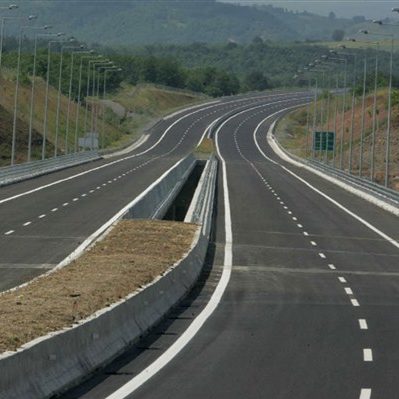Drama is located at the northern limits of the large plain formed between Pangaeo and Falakro. One of the oldest Neolithic settlements is the prehistoric settlement of Sitagro. The oldest traces of human presence in the area of the current city of Drama appear on the hill of the “Arkadikos” area, where one of the important Neolithic settlements of the plain of Drama is located. Inside the city of Drama, and in the area of workers’ housing, in the largest prehistoric Toumba of the prefecture of Drama, on the borders of Arkadikos, the excavation research began in 1991, where it brought to light a Neolithic village, the oldest permanent prehistoric settlement of Drama. The existence of a Hellenistic-era settlement in Drama was confirmed in 1978 by the discovery of a Macedonian-style tomb on Troias Street dating to the 2nd century BC.
The Romans, in their world-empire plan, saw Macedonia as a barrier that hinders their conquering goals, and they opportunistically looked for the right moment to attack and subjugate it. In Drama at that time there was a station between Philippi and Heraklion, on the Egnatia road, the Roman road “Via Egnatia”, connecting Rome with Constantinople. After the Battle of Philippi in 42 BC, Antony organizes the installation of veteran soldiers. The region of Drama then, but also all of Macedonia saw bad days. In 30 BC, Antony was defeated by Octavian Augustus, who created the Roman colony of Philippi (Colonia Augusta Iulia Philippensis) with many “comas” and “farmhouses”. The city of Drama was a “come” (vicus) of the Roman colony of Philippi and received the influence of Roman culture. From the inscriptions found from time to time in the city, the early mixing of the local Thracian population with the Greek emerges, but we see that the Greek language prevails in the hinterland of Pangaeus. In the year 49 AD we also have the foundation of the first Christian church. This metropolis includes the fortified “city” of Drama, whose area approaches the protected area with the surviving Byzantine wall. Because it was not in a strategic position, Drama was fortunate to have a peaceful career and in the Byzantine years to be away from wars. In the mid-Byzantine era (9th – early 13th century AD), Drama developed into a strong castle with strategic importance and lively commercial interest, while it was still subject to the Philippi from an administrative and ecclesiastical point of view. At the end of the 10th century and in the same period, the particularly important from an architectural point of view the Church of Agia Sophia was built. Throughout the Late Byzantine period (beginning of the 13th century AD – 1453), Drama constantly changed rulers, like all Byzantine provinces. The Frankish conquest of Drama began in 1206. Frankish rule in the region lasted only 17 years, from 1206 to 1223, when it was overthrown by the ruler of the Despotate of Epirus. In 1230 it was occupied by the Tsar of Bulgaria and in 1245 it returned to the Byzantines. It was occupied by the Byzantines between the years 1242/43 and 1246. It remained Byzantine until the time of its occupation by the Serbs (1344 – 45), knowing in the meantime the destructive fury of the civil wars.
In 1371 it was recaptured by Manuel II Palaiologos and remained in the Byzantine Empire until the Ottoman conquest in 1383. Drama surrendered to the Turks in 1373 or 1384. With the Turkish invasion of the city, the Church of Saint Sophia was converted into a mosque. In the year 1507, on April 23, 172 monks of the Holy Monastery of Ikosifinissa Pangaio were slaughtered. In 1825 the Greek population of Drama thinned out a lot. Thus the Metropolis is transferred to Alistrati, where the Turkish element is minimal compared to the Greek one. The population of the city had increased significantly in the last forty years of the Turkish rule (1870 – 1910) compared to the previous forty years (1830 – 1870). In 1840, the city’s schools operated in the narthex of the church. Later, the so-called “School” was created, where the school and the girls’ school were housed. This “School” was maintained until 1881.
The Greek-Turkish war of 1897 once again made the life of the Greeks of the city a martyrdom. From 1897 to 1904 in the district of Drama we have the gangs of the Bulgarian Committee. The start of the Balkan wars finds the Greeks of the prefecture of Drama in a state of anticipation. They are sure how the longed for freedom finally arrives. The Turks are leaving. But on 23.10.1912 Drama is occupied by the Bulgarian army. On 1-7-1913, the 7th Division of the Greek army liberates Drama. After 540 years of slavery, Drama lives free. Then a new Bulgarian occupation (1916 – 1918) appeared during the first world war. In September 1918, Drama is liberated and becomes the capital of Eastern Macedonia and seat of General of the Administration of Eastern Macedonia – Thrace. In 1923 the English Red Cross founded a Hospital. In 1928 the first census of the population takes place, in 15 years it almost doubled. In November 1929, elected rulers were elected for the first time. In 1930-31 we have the great financial crisis. The economy of Drama is being severely tested. After that, economic life finds its rhythm again. In April 1941, the third Bulgarian occupation begins, which will last until October 1944.




